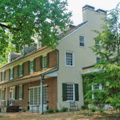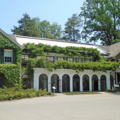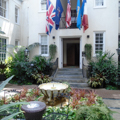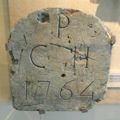According to Winterthur Museum historian Margaret Lidz, Delaware's Chateau Country resembles enclaves of the ultra-rich on the Gold Coast of Long Island, New York, and the Main Line grand estates outside Philadelphia, but with differences: a greater physical scale and pervasive Francophilia. Even the railroad stations received French names in honor of the du Ponts' Old World origins: Montchanin, Cossart, and Granogue.
The landscape of northern Christiana Hundred preserves the distinctive impress of the country estate, a phenomenon that reached its peak in 1910–1940. These estates, Lidz notes, showed common characteristics. They were frequently 500 acres or more, embracing diversified agricultural endeavors that were managed scientifically. Huge gardens and conservatories featured rare plants. The company-minded du Ponts ran their estates with corporate efficiency, devising pyramidal charts of organization and paternalistically providing for employees' needs in a way that struck some visitors as feudalistic. The chateaux displayed the genealogical collections of the owners even as they showcased cutting-edge technology from the latest automobiles to innovative mechanical systems—for always the du Ponts were engineers.
Of the many estates, Lidz points to four as especially complex and vast: Nemours, Winterthur, Longwood in Pennsylvania, and Granogue. The latter is still occupied by the son of its first owner, a remarkable survival of the country estate lifestyle into the twenty-first century.
Writing Credits
If SAH Archipedia has been useful to you, please consider supporting it.
SAH Archipedia tells the story of the United States through its buildings, landscapes, and cities. This freely available resource empowers the public with authoritative knowledge that deepens their understanding and appreciation of the built environment. But the Society of Architectural Historians, which created SAH Archipedia with University of Virginia Press, needs your support to maintain the high-caliber research, writing, photography, cartography, editing, design, and programming that make SAH Archipedia a trusted online resource available to all who value the history of place, heritage tourism, and learning.













